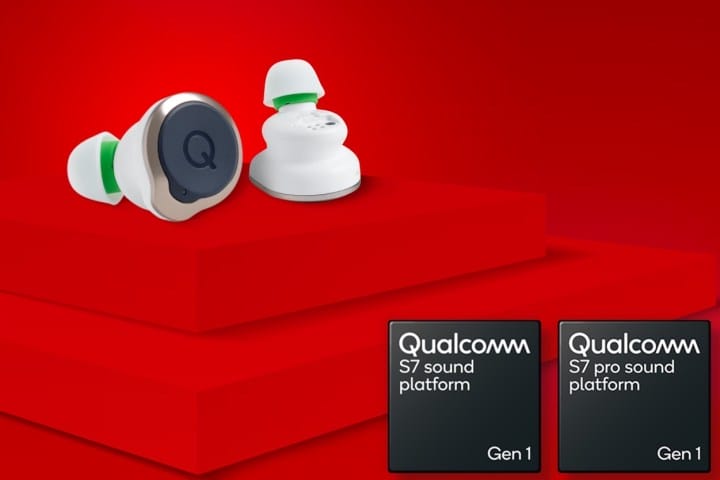
Qualcomm’s latest chips for wireless earbuds and headphones achieve what was long impossible (or at least, very impractical) — they give these devices the ability to connect over standard Wi-Fi in addition to Bluetooth. Not only does it have the ability to significantly extend Bluetooth’s wireless range, but it also enables the playback of lossless hi-res audio, and this is something that Bluetooth’s limited bandwidth cannot do.
Hopefully we will see the first products using this technology by the end of 2023.
Micro-Power Wi-Fi
The technology, which Qualcomm calls XPAN (Extended Personal Area Network), uses micro-powered Wi-Fi that’s built into its latest audio chip, the S7 Pro Sound Platform Gen 1. “Micro-power” is the key to making Wi-Fi for earbuds and headphones work. Traditionally, Wi-Fi consumes a lot of power and requires a larger battery than you can usually fit in a set of wireless earbuds.
Qualcomm claims that its XPAN Wi-Fi is so power-efficient that it can stream 96kHz lossless audio for up to 10 hours using the same size battery that previously could only play Bluetooth audio at 48kHz for the same period.
More range than Bluetooth
Having Wi-Fi connectivity in a set of earbuds or wireless headphones is great from a bandwidth standpoint, but it can also play a role in wireless range. Bluetooth is usually limited to about 33 feet, unless you’re using a Class 1 Bluetooth radio (which some earbuds and headphones have). It is also bad when it comes to penetrating walls and other obstacles. But many of us have a Wi-Fi network that covers our entire home, either using a powerful Wi-Fi router or, increasingly, using a mesh Wi-Fi system.
Qualcomm’s XPAN is designed to sense the quality of the Bluetooth connection, and smoothly switch it to Wi-Fi as you reach the limit of the Bluetooth range. This is useful for listening to music uninterrupted, but it’s even more helpful when you’re on the phone or on a video call.
XPAN works with Wi-Fi 5, 6, 6E and 7 networks on the 2.4, 5 and 6GHz bands, meaning that in corporate settings, it lets you roam to any location covered by your office Wi-Fi. Can give permission.
huge bandwidth
Wi-Fi may be overkill for casual stereo listening, but XPAN’s bandwidth – up to 29 Mbps – is about 30 times larger than Bluetooth, opening the door to many applications. With that kind of headroom, 24-bit/192 kHz lossless music streaming is easily achievable. In fact, it’s such a high data rate that you can stream 16 channels of Dolby True HD, including Dolby Atmos.
Requires Snapdragon Sound
As attractive as these examples are, the first products to use the S7 Pro Gen 1 chipset will only be able to use XPAN when paired with a Snapdragon Sound device. In this case, we’re talking about devices that use Qualcomm’s Snapdragon 8 Gen 3 mobile platform or its Snapdragon X Elite platform for PCs.
However, was told that XPAN could make its way into Bluetooth wireless speakers, where it could potentially be used to stream music from services like Apple Music and Amazon Music over Wi-Fi without the need for a Snapdragon Sound device acting as an intermediary. Fi can be used to access music streams. It could also pave the way for additional wireless home theater products that compete with WiSA and Sonos’ solutions.
Better ANC, Transparency and AI
While Wi-Fi for wireless earbuds and headphones sounds like big news for Qualcomm’s audio announcement, it’s only available on the company’s S7 Pro Gen 1 platform. But there’s also a non-Pro version of the S7 platform, and along with the S7 Pro, it has a number of other enhancements.
Qualcomm says it has increased the onboard AI capabilities of these chips by 100x compared to its S5 generation, opening up huge possibilities for companies to create innovative audio-based experiences. Similarly, the overall computation power is six times higher.
The chips support Bluetooth 5.4, which includes LE Audio and compatibility with Bluetooth Auracast. Qualcomm says it has also improved its native active noise cancellation, which now includes an adaptive transparency mode. There’s also support for spatial audio and immersive, low-latency gaming audio.
The platform also enhances hearing ability through the use of personal sound amplification.


